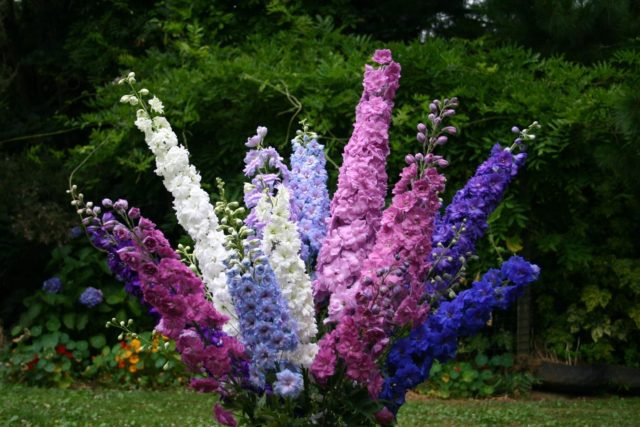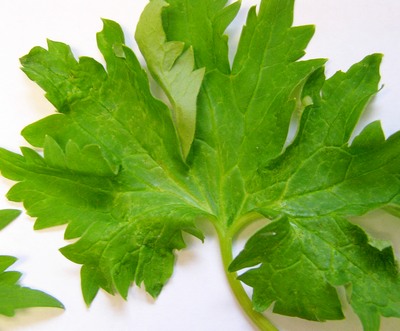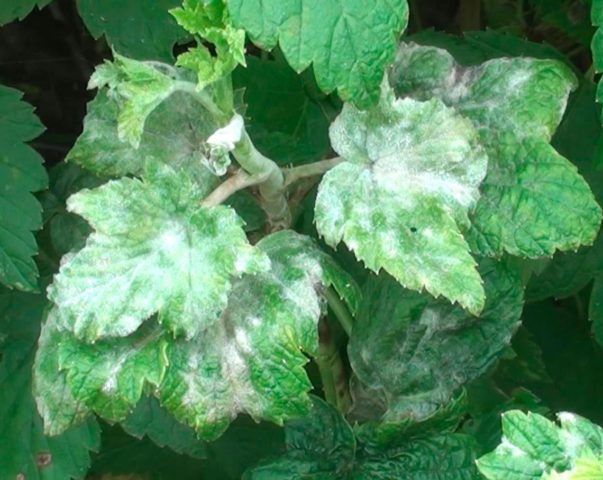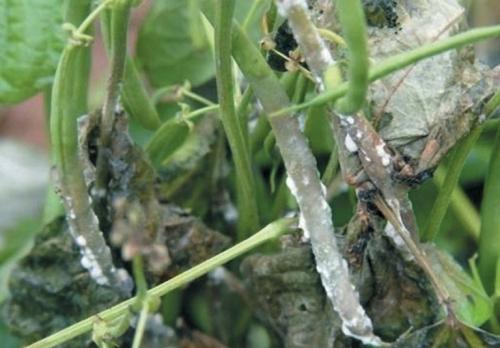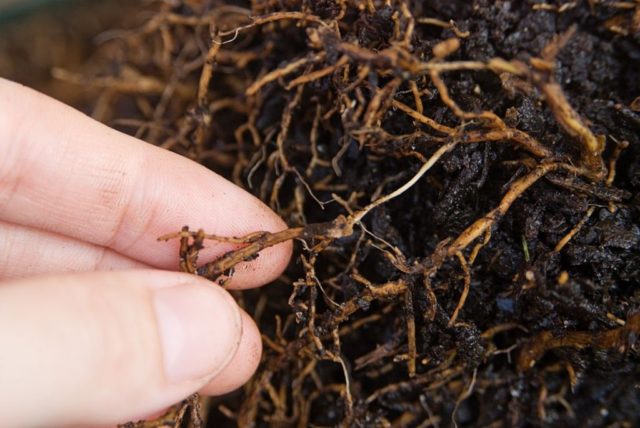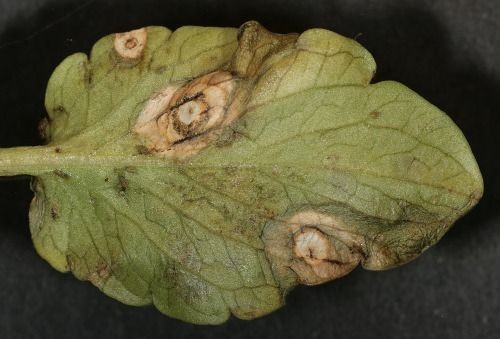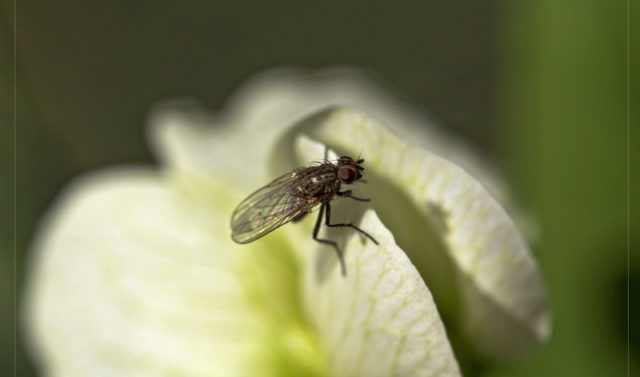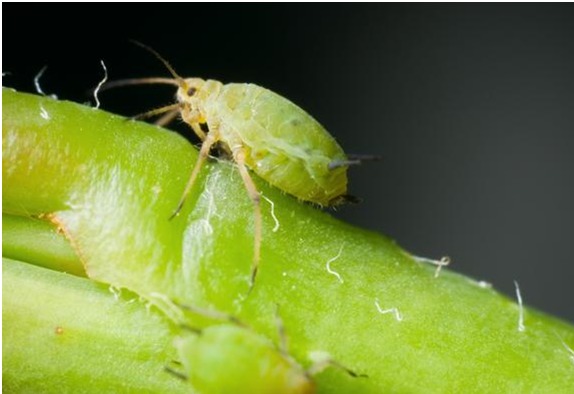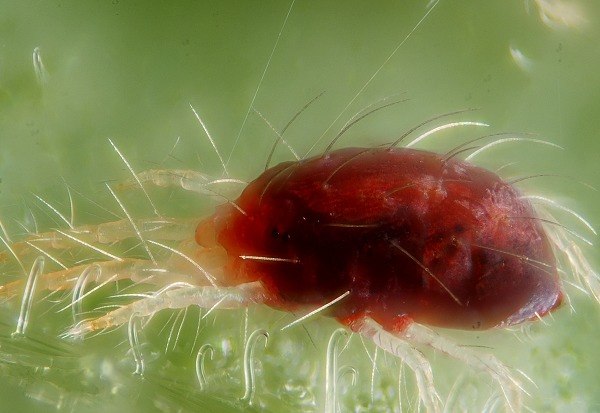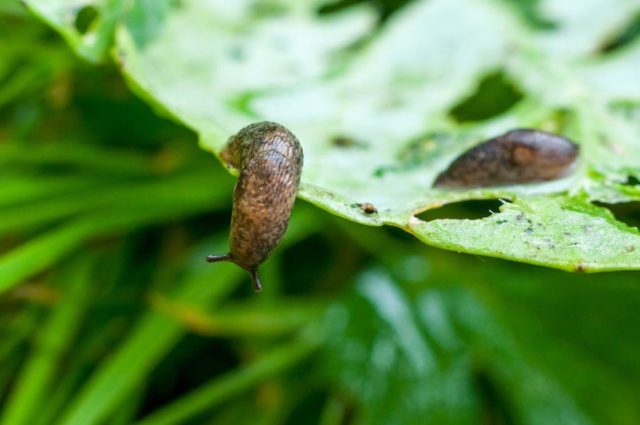Content
Delphinium diseases and pests, which can cause significant harm to the plant, affect the culture quite often, despite its endurance and high immunity. Therefore, flower growers should know in advance about all pathologies and dangerous parasites, symptoms of diseases, about methods of treatment and pest control.
Delphinium diseases and their treatment
Delphinium is most often affected by viral, bacterial and fungal diseases. Some of them are incurable, and to eliminate the infection, you have to completely destroy the perennial flower. Otherwise, the disease can spread to other crops.
Black spot
The most common delphinium disease is black spot, which is most common in wet and cold weather. The development of the disease is as follows:
- First, black spots form on the lower leaves.
- Then they spread to the top of the foliage.
- In the process of spreading, the stem suffers, which also turns black.
The insidiousness of the disease lies in the fact that the bacteria of spotting can quietly winter, both on last year's infected foliage and in the ground. That is why every autumn it is recommended to remove fallen leaves from flower beds and destroy it.
Treatment of the disease depends entirely on the prevalence of spotting on the plant. If the delphinium has just begun to become covered with spots, then you can try to save it. A tetracycline solution is used as a healing elixir. The drug is dissolved in water at the rate of 1 tablet per 1 liter of water. Processing is carried out twice: the second time - three days later.
If the disease has spread, then the delphinium is unlikely to be saved. Therefore, it is recommended to dig up and burn the affected bush, and treat the soil from under it with a tetracycline solution.
Withering delphinium
Many delphinium diseases, as well as plant pests, lead to its wilting. But there is also a separate pathology of the same name, which develops as a result of the vital activity of some bacteria. This can be facilitated by both wet and cool weather, and dry and hot.
Disease development:
- First of all, yellowness appears on the lower leaves.
- Then the stem becomes covered with dark and brown spots.
- In the future, the affected areas on the stem become soft, and then turn black.
This disease is considered incurable because bacteria destroy the flower from the inside. The only option to save the delphinium from wilting is to take preventive measures. Before planting, the seed is soaked for 30 minutes in hot water (45 - 50 degrees).
Powdery mildew
A common disease in delphiniums is powdery mildew, which manifests itself as a grayish bloom on the deciduous part of the plant. In this case, the flower can turn silvery in an instant, and the foliage will fade more and more every day. After the greens turn brown or brown, it will not be possible to save the plant.
Powdery mildew treatment is possible in the early stages. For this, colloidal sulfur is used. The bushes need to be sprayed with a 1% solution.
Downy mildew
The disease can attack the plant during the autumn rainy period. The reason for the development of pathology is dampness and coolness. From this, the lower parts of the foliage begin to become covered with a silvery-white layer.
Like many other delphinium diseases, downy mildew can be removed with Bordeaux liquid. And if the fight against them is started in a timely manner, then the chances are high to save the plant, and it will continue to delight the eyes not only in the photo.
Root collar rot
Fungal diseases of the delphinium are also dangerous, for example, rot of the root collar. The main symptom is the appearance of a cobweb-like mycelium at the base of the stem, as well as yellowing of the lower part of the foliage. Rot quickly destroys the roots, which leads to the death of the culture.
Infection occurs either when pruning a bush or when transplanting. Excessively moist soil, coupled with high temperature indicators of the air, promotes the development of rot.
Fusarium
Another disease that can affect a delphinium in a hot summer is stem wilting, or fusarium. Most often, the disease overtakes young plants, in which the stem begins to become covered with spots. Fusarium quickly spreads through the bush, moving from the stem to the roots. It takes less than a week for the disease to kill the plant. And the only way to save an infected flower is to remove the damaged stems and get rid of them by burning.
Leaf ramulariasis
Some delphinium diseases, photos and descriptions of which must be studied even before planting a plant, are difficult to treat. The same applies to a disease called ramulariosis, which is expressed in the appearance of a large number of spots, which can reach more than 1 cm in diameter. In this case, the foliage begins to dry and then falls off.
You can save the delphinium by immediately treating it with a solution of borax or foundation.
If, in the spring, the delphinium is treated against diseases that develop due to the attack of viruses, then the plant can be protected from many ailments and even from death.
Delphinium pests and the fight against them
Not only diseases can attack the delphinium in the garden. There he is pursued by numerous pests. Most often, the lists of enemies include:
- caterpillars;
- delphinium fly;
- delphinium tick;
- slugs;
- aphid;
- meadow nematode.
All of these pests harm flowers, stems and foliage, and nematodes can destroy the root system. If you run a problem, the plant can quickly die.
Dolphinium fly
The main danger of this pest is that the fly lays eggs with its offspring right in the buds of the delphinium. After the appearance of the larvae, the stamens and pistils begin to attack, which first leads to the plant ceasing to bear fruit, and then completely dies.
The main and most effective remedy against this pest is a 10% solution of prometrine. It is necessary to process the delphinium several times to remove the fly and its offspring forever.
Aphid
An equally dangerous pest is aphid, which loves not only cabbage and radishes, but also flower crops. Aphids quickly spoil the foliage, which makes it impossible for the normal nutrition of the flower.
Several means are capable of eliminating the pest:
- specialized drugs;
- soap solution with water (household, 70%);
- infusion of tobacco (pour fresh grown tobacco with boiling water in a ratio of 1 to 1, leave for 3 days, shed a plant that has been attacked by pests).
Delphinium tick
If the leaves of the delphinium began to curl and turn black, then this may indicate the presence of such a pest as the delphinium mite, which damages flowers and leaves.
Attention! If the delphinium is not treated with special means from this pest, then the plant may die.
Slugs
Slugs attack mainly young specimens of the delphinium, therefore they are considered very dangerous pests. To prevent the flowers from dying, you need to take care of their safety in advance. You can scatter granular metaldehyde, superphosphate or ordinary lime on the flower beds, which the parasites try to bypass.
Meadow nematode
An insidious pest that can infect the roots of a flower is a meadow nematode. It is quite difficult to remove it, so experienced gardeners prefer to protect their site from the appearance of the parasite. This can be done by treating the soil with forty percent thiazone. The procedure is carried out before planting the delphinium, about 20 - 30 days.
Preventive actions
A plant such as delphinium can attack various diseases and pests. Many of them lead to the death of the garden flower, so it is best to follow some recommendations for the prevention of diseases.
- Soil preparation... Before planting a delphinium in the ground, it is necessary to disinfect the soil and seeds. For this, a simple solution of manganese is suitable, with which the soil is spilled, and in which the seed is also soaked before sowing.
- Drainage layer construction... Despite its unpretentiousness, delphinium prefers a moderate level of soil moisture. To prevent moisture from stagnating, it is necessary to pour a small layer of fine gravel or expanded clay into the holes before planting.
- Compliance with the schedule of watering and fertilizing... If the plant grows in comfortable conditions, then it will have high immunity, which will allow it to cope with the attack of various diseases and pests.
Conclusion
Diseases of the delphinium and damage to it by pests can have various origins. In this case, some cases are incurable. Therefore, it is important to take a responsible approach to the process of growing this garden flower, observing the rules of care and taking preventive measures.
